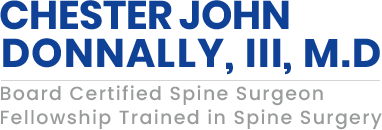What is Computer-navigated Spine Surgery?
The spine is a complex 3-dimensional structure that is interspersed with a complex lattice of delicate blood vessels and nerves. Trauma to these structures during surgery is a big concern in spinal surgery. The complexity and increased need for precision in thoracic spine surgeries have led to the introduction of computers to assist in many spinal procedures.
Computer navigation can serve an active or passive role by actually performing the surgery or limiting the surgeon’s movements beyond a certain point, or by just providing real-time information that helps your surgeon make critical decisions on the mode of action.
What is Image-guided Spine Surgery?
Imaging techniques such as computed tomography and fluoroscopy may be integrated into the system to facilitate pre-operative planning of the surgery, where a series of images taken before the surgery are displayed on a screen, with which your surgeon matches his/her moves intraoperatively. They can also serve as real-time guidance, where your surgeon can view, and navigate instruments and implants as they are placed during the surgery.
Imageless computer navigation systems use a set of infrared markers to select certain body parts as landmarks using a tracking system (an optical camera). These are transferred to a computer software program that compares them to a model created by multiple stored CT scan images of the patient’s spine taken before surgery to ensure that the procedure is being carried out in perfect accordance with their individual anatomy.
Indications of Image-guided Spine Surgery
Image-guided spine surgery is being used in many spinal procedures such as implant insertion and decompression of pinched spinal nerves.
Thoracic spinal surgery faces the challenge of instrumentation due to the narrow spinal canal, small size and variable structures of the pedicles used for stabilizing the thoracic vertebrae.
In view of the high rate of screw misplacements using traditional procedures, image-guidance is being employed in thoracic spine surgeries to allow real-time evaluation of screw positioning and immediate revision of misplaced screws.
Advantages of Image-guided Spine Surgery
Image-guided spine surgery reduces surgery complications and the need for another operation. It is also advantageous in adequately decompressing the spine without damaging the nerves and blood vessels that are in close proximity.
In addition, image-guided spine surgery and computer navigation allow the surgery to be performed minimally invasively as it provides adequate structural and spatial data for your surgeon to perform the surgery confidently without the need for direct visualization through a large incision. This approach in turn facilitates:
- Less tissue dissection to reach the surgical site
- Reduced post-operative pain
- Improved function
- Faster recovery












